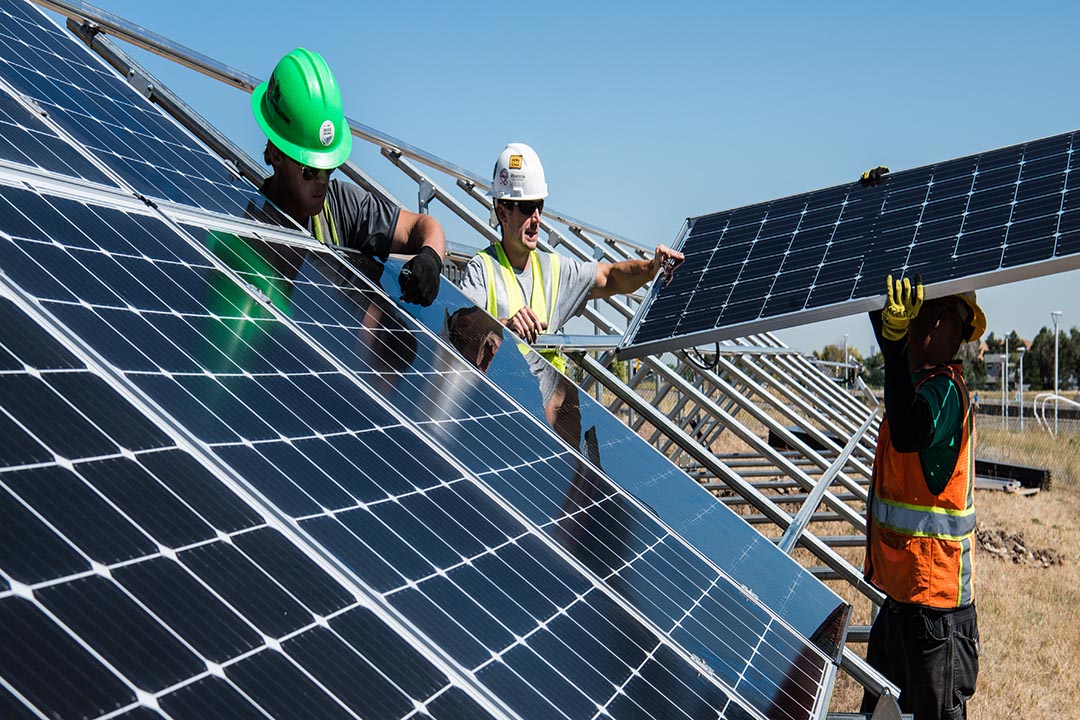
Climate, Energy, and Environment Ministers Reaffirm Commitment to Paris Agreement and Global Biodiversity Framework

The Group of 7 (G7) ministers, consisting of Germany, Canada, France, Italy, Japan, the UK, the US, and the EU, met in Sapporo, Japan, from 15-16 April 2023. In their 36-page communiqué, the ministers emphasized the urgent need to address the triple global crisis of climate change, biodiversity loss, and pollution. They also acknowledged the ongoing global energy crisis and the environmental damage caused by the war in Ukraine.
Commitment to Sustainable Development Goals (SDGs)
- The ministers are committed to the Paris Agreement on climate change and aim to keep the goal of limiting global warming to 1.5 °C “within reach through scaled up action in this critical decade.”
- They also emphasize the importance of the full, swift, and effective implementation of the Global Biodiversity Framework (GBF).
Green Transformation and Synergies
- The ministers will advance and promote a green transformation to address climate change, biodiversity loss, pollution, land degradation, and the energy crisis.
- They will leverage synergies and prevent trade-offs by accelerating the clean energy transition, resource efficiency, and a circular economy.
- Their goal is to achieve the 2030 Agenda for Sustainable Development and its SDGs.
Role of Science and Innovation
- The ministers recognize the vital role of science and innovation in supporting their efforts to address the global crises.
Sustainable Value Chains and Nature-based Solutions (NbS)
- The ministers commit to sustainable value chains and stress the importance of strengthening critical minerals supply to achieve a net-zero economy.
- They also commit to strengthening the deployment and implementation of Nature-based Solutions (NbS).
Biodiversity Conservation
- The ministers highlight the importance of driving the transition to nature-positive economies.
- They reaffirm their commitment to conserving and managing at least 30% of terrestrial and inland water areas, and at least 30% of marine and coastal areas by 2030 (30 by 30).
- They also commit to substantially increasing national and international funding for nature by 2025.
- The ministers welcome the conclusion of the high seas treaty talks under the UN Convention on the Law of the Sea (UNCLOS).
Plastic Pollution
- The ministers express their commitment to end plastic pollution and aim to reduce additional plastic pollution to zero by 2040.
- They welcome the ongoing negotiations towards a plastics treaty.
Climate and Energy Actions
The communiqué details actions, commitments, and priorities on:
- System transformation to realize emissions reduction and economic growth.
- Transition of the energy sector.
- Decarbonization of industry, transport, and buildings.
- Enhancement of resilience and support for climate actions, especially for the most vulnerable people.
Other Commitments and Aspirations
The ministers also outline their commitments and aspirations in the areas of:
- Forests and land degradation.
- Water.
- The ocean.
- Food.
- The circular economy.
- Air pollution and health.
- Finance and international assistance and coordination.
[G7 Climate, Energy and Environment Ministers’ Communiqué]
SDGs, Targets, and Indicators in the Article
1. SDGs Addressed or Connected to the Issues Highlighted in the Article
- SDG 13: Climate Action
- SDG 14: Life Below Water
- SDG 15: Life on Land
The article highlights the commitment of the G7 ministers to the Paris Agreement on climate change, which is directly related to SDG 13 – Climate Action. The ministers also reaffirm their commitment to conserving and managing terrestrial, inland water, marine, and coastal areas, which aligns with SDG 14 – Life Below Water and SDG 15 – Life on Land.
2. Specific Targets Under Those SDGs Identified Based on the Article’s Content
- Target 13.2: Integrate climate change measures into national policies, strategies, and planning
- Target 14.5: By 2020, conserve at least 10% of coastal and marine areas
- Target 15.1: By 2020, ensure the conservation, restoration, and sustainable use of terrestrial and inland freshwater ecosystems and their services
The commitment to the Paris Agreement and the goal of keeping the 1.5 °C target within reach through scaled-up action aligns with Target 13.2 under SDG 13. The commitment to conserving and managing at least 30% of terrestrial and inland water areas, as well as marine and coastal areas by 2030, corresponds to Target 15.1 under SDG 15. Additionally, the commitment to effectively conserve at least 10% of coastal and marine areas aligns with Target 14.5 under SDG 14.
3. Indicators Mentioned or Implied in the Article to Measure Progress towards the Identified Targets
- Indicator 13.2.1: Number of countries that have integrated mitigation, adaptation, impact reduction, and early warning measures into national policies, strategies, and planning
- Indicator 14.5.1: Coverage of protected areas in relation to marine areas
- Indicator 15.1.1: Forest area as a proportion of total land area
The article does not explicitly mention indicators, but based on the identified targets, we can infer relevant indicators. Indicator 13.2.1 can be used to measure progress towards integrating climate change measures into national policies and planning. Indicator 14.5.1 can measure the coverage of protected areas in relation to marine areas, indicating progress towards conserving coastal and marine areas. Indicator 15.1.1 can measure the forest area as a proportion of the total land area, indicating progress towards conserving terrestrial ecosystems.
Table: SDGs, Targets, and Indicators
| SDGs | Targets | Indicators |
|---|---|---|
| SDG 13: Climate Action | Target 13.2: Integrate climate change measures into national policies, strategies, and planning | Indicator 13.2.1: Number of countries that have integrated mitigation, adaptation, impact reduction, and early warning measures into national policies, strategies, and planning |
| SDG 14: Life Below Water | Target 14.5: By 2020, conserve at least 10% of coastal and marine areas | Indicator 14.5.1: Coverage of protected areas in relation to marine areas |
| SDG 15: Life on Land | Target 15.1: By 2020, ensure the conservation, restoration, and sustainable use of terrestrial and inland freshwater ecosystems and their services | Indicator 15.1.1: Forest area as a proportion of total land area |
Behold! This splendid article springs forth from the wellspring of knowledge, shaped by a wondrous proprietary AI technology that delved into a vast ocean of data, illuminating the path towards the Sustainable Development Goals. Remember that all rights are reserved by SDG Investors LLC, empowering us to champion progress together.
Source: sdg.iisd.org

Join us, as fellow seekers of change, on a transformative journey at https://sdgtalks.ai/welcome, where you can become a member and actively contribute to shaping a brighter future.






